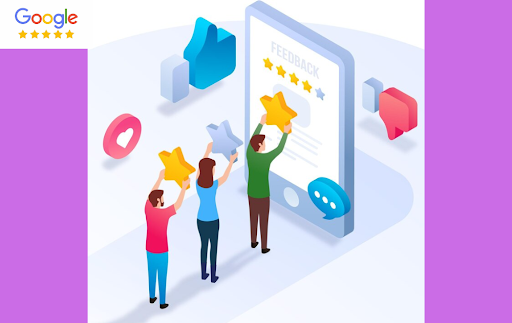The online shopping trend is revolutionizing today’s digital era with the new wave of headless commerce. Through this innovative solution, the frontend presentation layer is separated from the backend e-commerce functions, which provides businesses with real-time flexibility to design the perfect customer experience. Shedding light on the future of e-commerce in 2024, Shopify is among the major platforms for headless commerce which offers full support and a flexible system for the enterprise that is willing to embrace this modern architecture.
It is crucial to make the right decision about e-commerce solutions in 2024 due to the high stakes. In the age of customers with increased demands and the digital marketplace being more competitive than ever, the choice of the right platform and approach may serve as a springboard to the success or potential failure of a brand. Headless commerce, with its customization and flexibility advantages, marks a radical move to how customers now relate to businesses. Thus, knowledge of the abilities, uses and possible drawbacks of headless commerce in Shopify is essential if you want your enterprise to succeed in the environment of the online retail industry that is quickly changing.
Understanding Headless Commerce
Headless commerce is a recent concept that completely separates web design from e-commerce ones. Consequently, the front end that includes the appearance and user interface—the “head”—can be designed and customized separately from the bulk database and e-commerce platform. APIs are used to bridge the gap between the front end and the back end, thus allowing the two of them to work together successfully while being two different entities.
Traditional vs. Headless Commerce Platforms
Classical e-commerce platforms are closed systems where the front-end presentation is tightly linked with back-end functionality. Frequently, changes to the user interface entail rewrites to the back end and vice versa, and this limits the flexibility and speed of deployment. Unlike headless commerce platforms that separate the front-end, which the customer faces, from the back-end require no alteration while they are updated or changed. It provides the opportunity for greater flexibility, as developers can use any framework or technology to build the front end, while marketers can also update content more frequently.
Benefits of Headless Commerce
- Customization: One of the most significant advantages that headless commerce provides is the high degree of customization that it offers. Businesses can customize the shopping experience based on their brand’s nature and customers’ needs, as they are not restrained by the front-end UI template limitations of their e-commerce platform. This freedom fosters the production of innovative products that bring about a breath of fresh air in a highly competitive market.
- Scalability: Headless commerce allows for scalability in different ways. This means that the front end and back end can separately be scaled while the other will not be affected. Such as, when traffic increases, a company will have its content delivery network (CDN) scaled to improve the site performance and to avoid completely overhauling the e-commerce system. Alongside this, it is also easier to integrate new technologies and digital platforms, enabling organizations to be more reactive to market fluctuations.
- Performance: Website performance plays a key role in retaining customers and enhancing the search engine’s ranking. By having headless commerce, the front end can be designed for speed and optimized for the back end to work even faster. Additionally, headless commerce allows for dynamic content delivery, through which content can be updated in real time according to the behavior of the user.
Why Shopify for Headless Commerce in 2024?
Heading to 2024, Shopify remains a celebrated platform leaving aside few options for businesses that are going headless. Being strong on user-friendly functionality and abilities, Shopify offers a powerful array of features, operational support, and dynamic open space that make it an excellent option for those who are thinking about using headless e-commerce. Why is Shopify leading the pack in 2024 with its Headless Commerce Solution? Let’s get into that.
Key Features for Headless Commerce
- API-First Approach: Heedlessly, Shopify’s powerful support of APIs contributes a lot in Headless commerce. The Storefront API, Admin API, and the Liquid templating language – among a wide range of other APIs- are just some of the many tools Shopify development offers to create custom storefronts for various platforms while managing products, collections and orders through the Shopify back end.
- Global CDN: Due to the integration of Shopify with a worldwide CDN (Content Delivery Network), your e-commerce site will be loaded quickly as Shopify guarantees this even if your customers are anywhere around the world. Hence, it greatly helps to do away with unhealthy relationships that may jeopardize their progress and stability.
- Custom Checkout Experience: Headless commerce on Shopify is the tool that give flexibility to the modification of the checkout process and, therefore, allows businesses to build the process of checkout that will be suitable for their clients. These customization efforts could potentially have a higher conversion rate, and smoother customer pathways.
Shopify’s Ecosystem and Support for Headless Architecture
Shopify’s platform is set up in an ecosystem comprising of themes, apps, and other third-party integrations providing businesses with the power to build, manage and scale their online presence. For headless commerce, this ecosystem includes:For headless commerce, this ecosystem includes:
- Developer Tools and Resources: Shopify has well-developed documentation, SDKs, and libraries to help developers build with headless commerce. As a result, the suggestions herein are committed to assisting in the efficient integration between the front end and the back end of Shopify frameworks.
- App Store: Apps of Shopify App Store are the numerous additions that support headless configurations, including headless CMS platforms, PIM systems, and custom fulfillment solutions, which purposefully provide a broadening of Shopify’s functions.
- Vibrant Community: The community of decentrally scattered developers and experts is just what a merchant needs when they are just about to jump into headless commerce. Peer-to-peer support can take place via conversations or specific issue-based platforms that provide guidance, how-to, and problem-solving tips.
Making the Right Choice
Whether you decide to implement Shopify Headless Commerce or not is highly dependent on a thoughtful analysis of the current condition of your business, projected future ambitions, and the extent to which you want to be involved with the customization and control of your online presence. According to the following, you can find evidence that the innovative approach fits your business model,
- Consider Your Business Needs and Goals: Heads depicted commerce models are especially useful for companies with high degree of customization, looking to offer tailor-made customer experience across several engagement points. If you are an entrepreneur who would like to enter new markets, sell through more sales channels, or develop technologies that are more out-of-date like augmented reality / virtual reality, Shopify may give you the flexibility you need.
- Assess Your Technical Resources: Employing a headless architecture might of course be harder than usual because it demands a specific level of technical knowledge. You will need a team that is OK with working with APIs, hosting a separate portal/website, and integrating with more than one system. If you have any developers around or have the leverage to hire Shopify experts as contractors, the headless setup is something to think about.
- Future-Proofing Your E-commerce Strategy: Think of whether you need a solution that grows through new patterns and technologies especially. The platform gives you the opportunity of having an headless commerce on Shopify, which enables a quick pivots and integration, the two aspects which are very essential for the e-commerce world where the environment becomes more and more dynamic.
Where Shopify Headless Commerce Excels
- Highly Customized E-commerce Experiences: The headless architecture of Shopify provides stores that have mastered customer-oriented shopping experiences with an additional weapon of choice. Either through the custom web apps, mobile apps or simply integration with all the social media platforms, headless allows it to be creative and to have differentiation.
- Omnichannel Selling: The Headless Commerce of Shopify is a great solution for the brands that the audience can touch across multiple channels (online, in-app, via social media, or through physical kiosks). Each of those touchpoints is connected to each other and this allows the brands to be unified.
- Scalable and International E-commerce: The headless model’s scalability, generality, and flexibility will come in handy for companies that plan to scale fast or expand internationally, precisely in the context of adapting to different markets, currencies, and languages without needing to make any major changes to the back end.
Scenarios Where It Might Not Be the Best Fit
- Small Businesses with Simple Needs: For smaller operations, whose needs lay in just the right amount of customization and omnichannel selling, managing a headless commerce system might be considered not worth the trouble. The flexibility of a traditional Shopify setup is often sufficient for most business requirements with less attention to detail.
- Limited Technical Resources: Small venture businesses will find the transformation of a headless architecture and its maintenance a bit of a concern since they may not have their own in-house developers.
Tips for a Smooth Transition
- Define Your Vision: Obviously, describe the benefits, you choose for headless commerce. Realizing its purpose, your objectives will be the driving force of the development process and technology selection.
- Hire the Right Talent: Having the right professional resource can be a matter or deciding whether you can hire in-house developers with headless setup experience. Think about getting involved with a Shopify development agency that offers headless commerce as a service and that might see your company through the transition.
- Leverage Shopify’s Ecosystem: Utilize Shopify’s comprehensive documentation, APIs, and vast developer community as well. Applying the available resources can materially shorten development timelines, and they will still be surmountable.
- Plan for SEO and Marketing: Though headless commerce requires a separate front end, using appropriate SEO, content management, and marketing strategies is very important. A seamless integration of different tools and platforms that are in line with Shopify’s headless form can help in keeping up appearances and attracting viewers.
- Continuous Testing and Optimization: Go headless and make sure to test your website regularly, performing different tasks such as usability, performance, and functionality tests. Expect to try again and try to enhance and optimize if your client provides you with feedback and analytics.
Conclusion
Shopify Headless Commerce addresses the needs of modern consumers the most by providing businesses with a new way to build appealing, interesting downloads that are tailored to the specific needs of consumers of today via a special headless commerce approach. This method isolates the front-end design from the back-end e-commerce, empowering the system to provide a level of flexibility, customization, and scalability far and beyond the ordinary.




